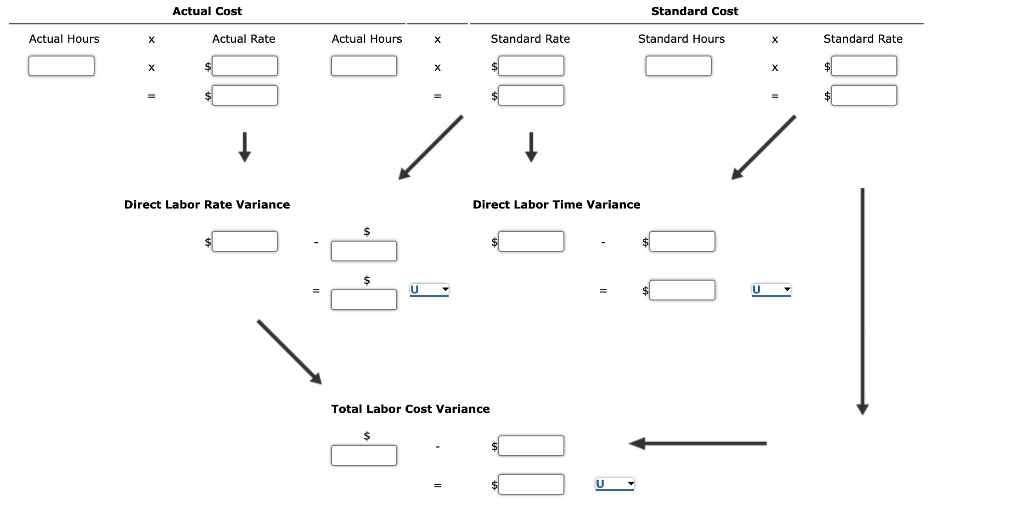Question
Gauging the Favorableness of Variances When variances occur, they are described as being either favorable or unfavorable. When actual activity consumes more time or money
Gauging the Favorableness of Variances When variances occur, they are described as being either favorable or unfavorable. When actual activity consumes more time or money than initially planned, an unfavorable variance exists. However, when actual activity consumes less time or money than initially planned, a favorable variance exists. Note that the terms favorable and unfavorable are used, rather than saying that a variance is good or bad, because until the cause of a variance is discovered, it is not clear whether a variance is either good or bad.
Note: Use the minus sign to indicate negative values (when the budgeted amount is greater than the actual).
If a company calculates that the actual cost for the actual hours worked by employees was $4,500,000, and the amount budgeted for those hours actually worked was $4,600,000, the actual cost for hours worked less the budgeted cost for hours worked is $_______. This tells you that the actual cost at actual hours worked is less than the budgeted cost at actual hours worked.
If a company calculates that the budgeted cost for actual hours worked is $190,000, and the budgeted cost at the budgeted amount of hours to have been worked is $160,000, the budgeted cost at actual time worked less the budgeted cost at budgeted hours to have been worked is $______. This tells you that the actual hours worked at budgeted cost is greater than budgeted hours worked at budgeted cost.
Standard Direct Labor Cost The controller at your shoemaking company has determined that under normal conditions, you pay your employees $8.50 per hour, and it will take 2.8 hours of labor per pair of shoes. Given this information, calculate the standard cost of labor per pair of shoes. If required, round the standard labor per pair of shoes to the nearest cent.
| Manufacturing Costs | Standard Price | x | Standard Hours per Pair | = | Standard Cost per Pair |
| Direct Labor | $ | _______Hours | $ |
Actual Direct Labor Cost During July, your shoe-making company incurred actual direct labor costs of $65,610 for 7,290 hours of direct labor in the production of 2,200 pairs of shoes. Given this information, calculate the actual cost of labor per hour. If required, round the actual cost of labor per hour to the nearest cent.
| Manufacturing Costs | Actual Total Cost | / | Actual Total Hours | = | Actual Cost per Hour |
| Direct Labor | $ | ___________hours | $ |
APPLY THE CONCEPTS: Conduct the direct labor cost variance analysis
Illustrated Example: Calculating Direct Labor Cost Variance
Complete the following graphic to compute the direct labor rate variance, the direct labor time variance, and the total direct labor cost variance for your shoe-making business. When required, enter the rates as dollars and cents. If required, use the minus sign to indicate a negative value.

Step by Step Solution
There are 3 Steps involved in it
Step: 1

Get Instant Access to Expert-Tailored Solutions
See step-by-step solutions with expert insights and AI powered tools for academic success
Step: 2

Step: 3

Ace Your Homework with AI
Get the answers you need in no time with our AI-driven, step-by-step assistance
Get Started


